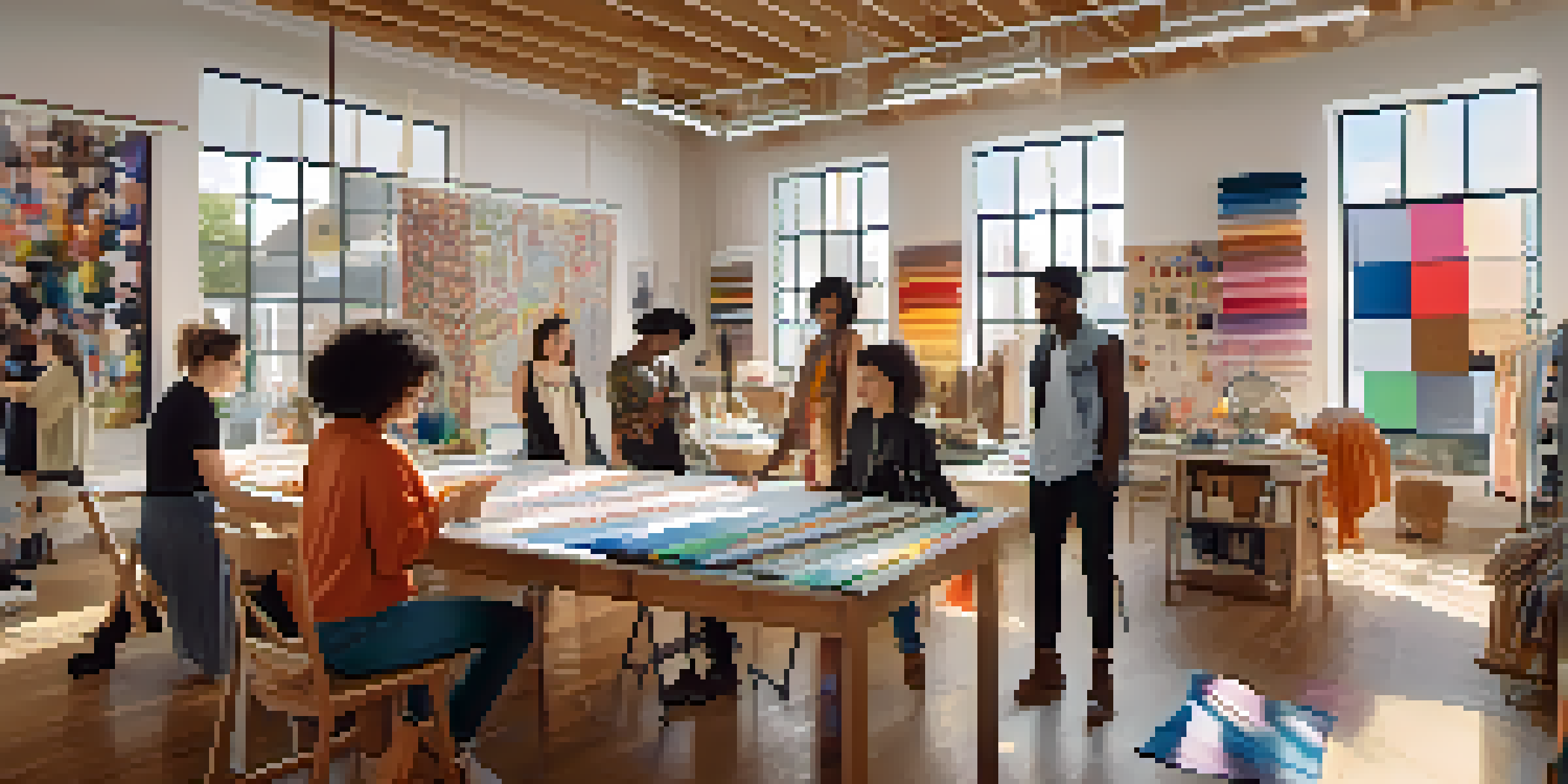How Fashion Brands Can Champion Gender Equality in Design

Understanding Gender Equality in Fashion Design
Gender equality in fashion design means creating spaces and opportunities for all genders to contribute and thrive. This approach not only enhances creativity but also reflects a more inclusive society. By prioritizing diverse perspectives, fashion brands can create designs that resonate with a broader audience.
Fashion is about dreams and the ability to express oneself; it should be inclusive of all identities and experiences.
Imagine a fashion house where male, female, and non-binary designers collaborate seamlessly. This collective effort can lead to innovative ideas that challenge traditional norms in the industry. When everyone feels valued, the designs produced are richer and more representative of the society we live in.
Ultimately, understanding and promoting gender equality is not just a trend; it's a fundamental shift in how fashion brands operate. It encourages a culture of respect, collaboration, and inclusivity, paving the way for a more equitable future in fashion.
Promoting Diverse Representation in Campaigns
Fashion campaigns are a powerful way to express brand values and connect with consumers. By featuring diverse models and showcasing various gender expressions, brands can send a strong message about inclusivity. This representation not only attracts a wider audience but also fosters a sense of belonging among customers.

For instance, brands that include individuals of different body types, ethnicities, and gender identities create a relatable image that resonates with many. This approach challenges the conventional beauty standards often seen in fashion advertising. When consumers see themselves reflected in campaigns, they are more likely to engage and support the brand.
Embrace Gender Equality in Fashion
Fashion brands should create inclusive environments where all genders can contribute, enhancing creativity and representation.
Moreover, diverse representation helps to break down stereotypes and promotes understanding. It encourages conversations around gender identity, leading to a more informed and accepting society. In this way, fashion brands can play a vital role in shaping public perception and championing gender equality.
Implementing Inclusive Design Practices
Inclusive design goes beyond aesthetics; it involves creating clothing that caters to everyone's needs. This means considering various body shapes, sizes, and gender identities in the design process. By doing so, fashion brands can ensure that their products are accessible and appealing to a diverse customer base.
Design is not just what it looks like and feels like. Design is how it works, and it needs to work for everyone.
For example, consider a brand that offers gender-neutral collections. These designs can transcend traditional boundaries, allowing individuals to express themselves freely through fashion. When brands prioritize inclusivity, they not only meet the needs of a broader audience but also position themselves as leaders in the industry.
Additionally, involving people from different backgrounds in the design process can lead to a more comprehensive understanding of the market. This collaborative approach fosters creativity and innovation, ultimately resulting in products that resonate with consumers on a personal level.
Collaborating with Gender Equality Organizations
Partnering with organizations that advocate for gender equality can amplify a fashion brand's impact. These collaborations can take various forms, from co-hosting events to creating awareness campaigns. By working together, brands can leverage each other's strengths to promote meaningful change.
For instance, a fashion label might collaborate with a non-profit focused on women's empowerment. This partnership could involve designing a line of clothing where a portion of the proceeds supports gender equality initiatives. Such actions not only demonstrate a brand's commitment but also engage customers who share similar values.
Diverse Representation Matters
Featuring a variety of models and gender expressions in campaigns helps brands resonate with a broader audience and fosters belonging.
Moreover, these collaborations can inform brands about the challenges faced by marginalized groups. Gaining insights from these organizations can help brands create more responsible and impactful designs. By aligning with gender equality advocates, fashion brands can lead the charge towards a more equitable industry.
Educating Consumers on Gender Issues
Fashion brands have a unique platform to educate consumers about gender equality and related issues. By incorporating educational content into their marketing strategies, brands can raise awareness and inspire change. This could include sharing stories of gender inequality or highlighting the importance of inclusivity in fashion.
For example, a brand might create a blog series discussing the history of gender representation in fashion. Such initiatives not only inform consumers but also foster a deeper connection between the brand and its audience. When consumers are educated about these issues, they are more likely to support brands that align with their values.
Additionally, brands can utilize social media to spark conversations around gender equality. Engaging with followers through polls, discussions, and informative posts can create a community focused on understanding and advocacy. This interactive approach not only builds brand loyalty but also promotes a culture of awareness and action.
Adopting Fair Labor Practices for All Genders
Gender equality extends beyond design and representation; it also encompasses fair labor practices. Fashion brands must ensure that all workers, regardless of gender, are treated fairly and compensated justly. This commitment is crucial for creating a sustainable and ethical fashion industry.
For instance, brands can conduct regular audits of their supply chains to ensure compliance with labor standards. By prioritizing fair wages and safe working conditions, brands can empower their employees and contribute to gender equality in the workforce. This action not only improves employee morale but also enhances the brand's reputation.
Commit to Fair Labor Practices
Ensuring fair treatment and compensation for all workers is vital for building a sustainable and ethical fashion industry.
Furthermore, brands can support initiatives that promote women's leadership in the industry. Investing in training programs for female workers can help bridge the gender gap in fashion. By championing fair labor practices, fashion brands can make a significant impact on gender equality both locally and globally.
Measuring Impact and Progress
To truly champion gender equality, fashion brands must measure their impact and progress. This involves setting clear goals and benchmarks for inclusivity and representation. By regularly assessing these metrics, brands can identify areas for improvement and celebrate their achievements.
For example, a brand might track the diversity of its workforce and the representation of various genders in its campaigns. By openly sharing this data with consumers, brands can foster transparency and accountability. This practice not only builds trust with customers but also encourages other brands to follow suit.

Additionally, brands can solicit feedback from their customers and employees about their initiatives. This feedback loop can provide valuable insights into how well the brand is meeting its goals. By continuously measuring impact, fashion brands can remain committed to their mission of promoting gender equality in design.